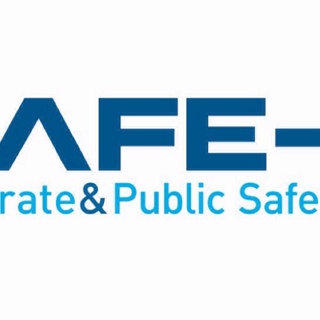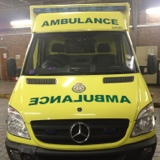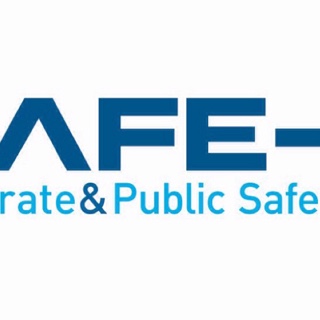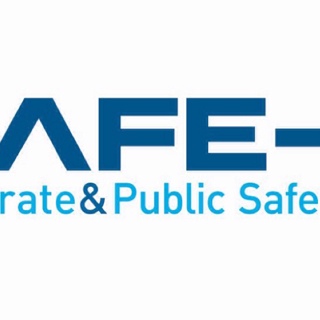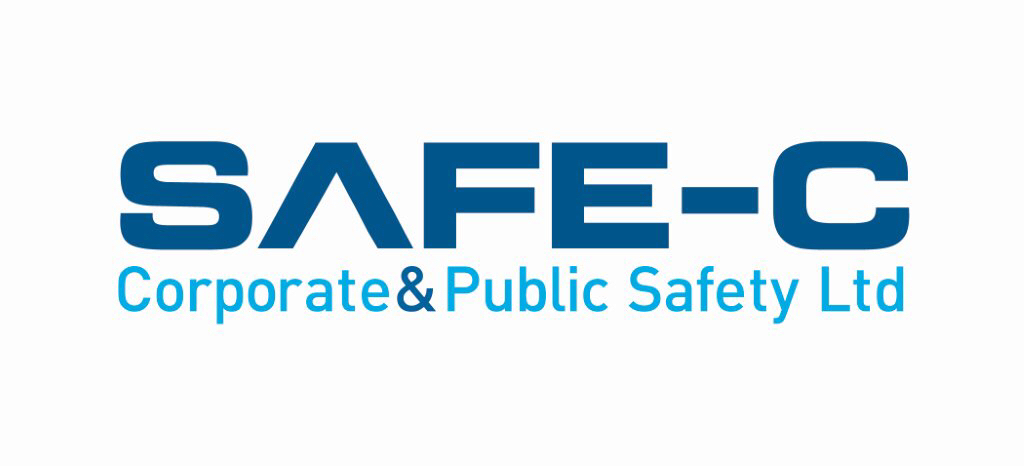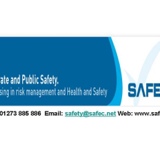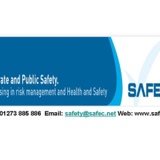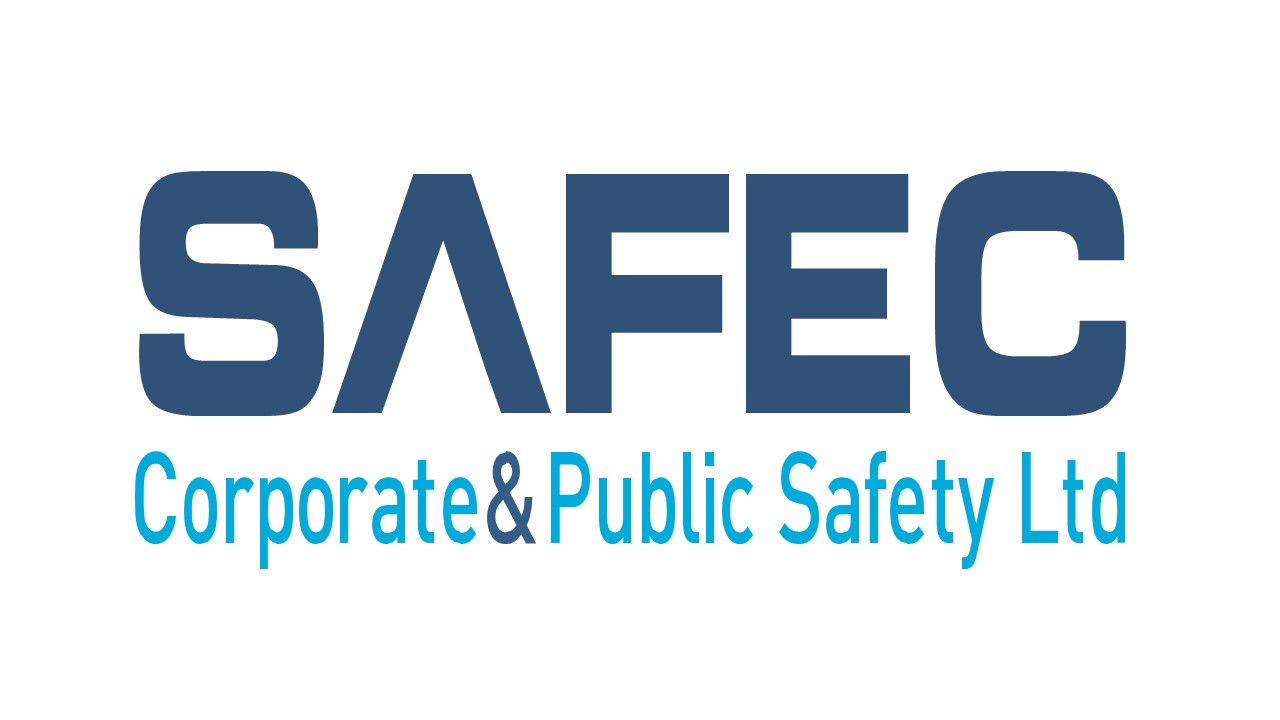Information
-
Document No.
-
Client / Site
-
Conducted on
-
Prepared by
-
Location
-
Personnel
HACCP system
-
Systematic, comprehensive HACCP plan, based on<br>Codex Alimentarius HACCP principles.<br>Conduct hazard analysis, determine critical CCPs,<br>establish critical limits, establish system to monitor<br>CCPs, establish corrective actions, establish<br>procedure for validation and verification of system,<br>establish documentation for procedures and<br>records.<br>The HACCP study should be based on a risk<br>assessment.<br>At least one member of the HACCP team to have<br>been demonstrable competence in the<br>understanding of HACCP principles and their<br>application.<br>Pre-requisite programs to be in place.
-
Action by
- Manager
- Maintenance
- staff in area
- Training
-
Required by
Quality Systems & Procedures
-
A basic QMS shall be in-place, which can form part<br>of the HACCP system<br>
-
Action by
- Manager
- Maintenance
- staff in area
- Training
-
Required by
Management Resource
-
At least one member of the HACCP team who has<br>demonstrable competence in HACCP principles and<br>their application shall be on site during production<br>periods.
-
Action by
- Manager
- Maintenance
- staff in area
- Training
-
Required by
Technical / Legal Support
-
The site shall be registered as a food premise with<br>the relevant local authority.<br>The company shall be able to demonstrate that<br>they have access either internally or externally to<br>specialist legal or technical advice. Where technical<br>resource is provided via a consultant, the site must<br>be able to demonstrate that they can contact the<br>consultant for information at all reasonable times.<br>This may be via a consultant, through membership<br>of trade associations or, by exception, through a<br>relationship with customers' technical departments.
-
Action by
- Manager
- Maintenance
- staff in area
- Training
-
Required by
Management Commitment
-
The site needs to be able to demonstrate a<br>commitment of the senior management team to<br>Food safety and quality.
-
Action by
- Manager
- Maintenance
- staff in area
- Training
-
Required by
Supplier Approval
-
There shall be a suitable process for approving<br>suppliers of ingredients and food packaging<br>materials.<br>The approval of suppliers shall be based on a<br>product risk assessment. Procedures for supplier<br>approval should include clear methods for initial<br>and ongoing assessment (i.e. in house checks,<br>certificates of analysis, supplier assessment<br>questionnaires) and the methods and frequency of<br>assessment should be based on risk.<br>An up-to-date approved supplier list should be inplace.<br><br>All incoming goods shall be checked on arrival and<br>records kept (i.e. temperature, date checks,<br>foreign matter, visual checks etc).
-
Action by
- Manager
- Maintenance
- staff in area
- Training
-
Required by
Document Control
-
The company shall maintain records and<br>documentation to demonstrate the effective control<br>of product safety, legality and quality.<br>Retention period of documents should relate to<br>shelf life of product and any legal requirements<br>and where there is possibility of shelf life being<br>extended by the customer.<br>
-
Action by
- Manager
- Maintenance
- staff in area
- Training
-
Required by
Internal Audits
-
The company shall audit / verify systems and<br>procedures which are critical to product safety and<br>legality. The audits shall be undertaken to a set<br>schedule (e.g. Glass audits, hygiene /<br>housekeeping audits, personal hygiene audits etc).<br>Results of any internal audits shall be actioned<br>promptly.
-
Action by
- Manager
- Maintenance
- staff in area
- Training
-
Required by
Specifications
-
Specifications, either in the suppliers or in the<br>company format, shall be available for all<br>ingredients, finished products and for all food<br>contact packaging. Specifications for all finished<br>products supplied to Compass Group UK & Ireland<br>shall be available and in the Compass Group<br>format when requested. All finished product<br>specifications for products supplied to Compass<br>Group UK & Ireland shall be as detailed as possible<br>and should also include allergen, microbiological<br>and nutritional information.<br>Formulation documents shall be present for each of<br>the products manufactured on site.<br>Specifications should be reviewed on a risk<br>assessment basis. Specifications for products<br>supplied to Compass Group UK & Ireland should be<br>reviewed on a minimum of every 2 years and<br>amendments communicated to Compass Group UK<br>& Ireland.
-
Action by
- Manager
- Maintenance
- staff in area
- Training
-
Required by
Traceability
-
Systems shall be in place to enable the suppliers of<br>all ingredients to be traced for each batch of<br>finished product manufactured. The traceability<br>system shall ensure that the immediate recipient<br>(this may be a distribution company, wholesaler or<br>catering unit) of each batch of finished product is<br>known. Systems shall be in place to ensure the<br>trace ability of rework is maintained.<br>All raw materials, work in progress and finished<br>product shall be clearly labelled with a date code<br>and where applicable batch codes
-
Action by
- Manager
- Maintenance
- staff in area
- Training
-
Required by
Product Recall
-
The responsibility for any decision regarding a<br>product recall shall be clearly defined. A suitably<br>experienced manager must be nominated to take<br>responsibility for the decision on whether it is<br>necessary to recall product.<br>A documented procedure detailing the action to be<br>taken in the event of a product recall shall be in<br>place. This procedure is to include, contact details<br>and out of hours numbers for all immediate<br>recipients of products and, where applicable,<br>customers to facilitate a product recall at any given<br>time. The site should hold contact details for their<br>local authority. The site should hold contact details<br>for Compass technical personnel.<br>The product recall process shall be tested on a<br>scheduled basis with records of the test being<br>maintained. If a successful product recall has been<br>carried out in the last 12 months - no test is<br>required.<br>
-
Action by
- Manager
- Maintenance
- staff in area
- Training
-
Required by
Complaint Handling
-
The company shall have specific systems in place<br>to deal with all complaints or investigations. The<br>company shall ensure that records of all customer<br>complaints and subsequent investigations are<br>maintained.<br>
-
Action by
- Manager
- Maintenance
- staff in area
- Training
-
Required by
Corrective Actions
-
Corrective action to be undertaken quickly and<br>efficiently by appropriate personnel.<br>There shall be evidence to demonstrate that<br>appropriate corrective action is taken.
-
Action by
- Manager
- Maintenance
- staff in area
- Training
-
Required by
Non-Conforming Product
-
Clear procedure for the isolation and removal of<br>any out of specification, contaminated, unsafe or<br>illegal ingredients / packaging, work in progress or<br>finished product shall be in place.<br>Any non-conforming work in progress shall be<br>clearly identified within the production process to<br>prevent mixing with good product.<br>The decision to release any non-conforming<br>product shall only be taken by authorized<br>personnel and documented.
-
Action by
- Manager
- Maintenance
- staff in area
- Training
-
Required by
Perimeter & Grounds
-
Premises shall be designed, constructed and<br>maintained to control the risk of product<br>contamination and comply with all relevant<br>legislation.
-
Action by
- Manager
- Maintenance
- staff in area
- Training
-
Required by
Site Security
-
Measures to ensure physical security shall be in<br>place e.g. Perimeter fencing, key control, security<br>lighting, CCTV Restricted access to production<br>facilities for unauthorised personnel.
-
Action by
- Manager
- Maintenance
- staff in area
- Training
-
Required by
Layout & Process
-
Suitable space shall be provided within the factory<br>to conduct all operations to ensure product safety<br>and integrity.<br>The system of working shall where appropriate, be<br>such to reduce any potential physical, chemical or<br>microbiological risk. In particular, separation of<br>raw and cooked operations must be sufficient to<br>prevent any risk of cross contamination.<br>Suitable facilities shall be provided for washing<br>equipment, trays and utensils and shall be sited to<br>prevent product contamination.<br>The building will be maintained in good state of<br>repair such that there is no imminent risk of<br>contamination.
-
Action by
- Manager
- Maintenance
- staff in area
- Training
-
Required by
Walls
-
Walls shall be designed, constructed, finished and<br>maintained to prevent the accumulation of dirt, to<br>reduce condensation and mould growth and to<br>facilitate cleaning.<br>Wall / floor junctions and corners should be coved<br>to facilitate cleaning. Cavities in the surface of<br>walls should be avoided to prevent debris from<br>lodging and pest harbourage.
-
Action by
- Manager
- Maintenance
- staff in area
- Training
-
Required by
Floors
-
Floors have adequate slope to cope with flow of<br>water or effluent towards suitable drainage. Floors<br>shall be constructed from suitable, easily cleanable<br>materials and shall be in suitable condition.
-
Action by
- Manager
- Maintenance
- staff in area
- Training
-
Required by
Ceilings
-
Ceilings and overheads shall be designed,<br>constructed, finished and maintained to prevent<br>the accumulation of dirt, to reduce condensation<br>and mould growth and to facilitate cleaning. Where<br>false ceilings are used, adequate access to the void<br>shall be provided to facilitate cleaning,<br>maintenance of services and inspections for pest<br>activity.
-
Action by
- Manager
- Maintenance
- staff in area
- Training
-
Required by
Doors and Windows
-
Where external doors to raw material handling,<br>preparation and storage areas are kept open,<br>suitable precautions shall be taken to prevent pest<br>ingress. Doors, in these areas shall be close fitting<br>or adequately proofed. Windows to the raw<br>material handling, preparation and storage areas<br>are kept permanently shut or adequately proofed.
-
Action by
- Manager
- Maintenance
- staff in area
- Training
-
Required by
Lighting
-
Shatterproof plastic diffusers, sleeve covers or<br>sheaths shall protect all bulbs and strip lights,<br>including those on electric fly killer units, where<br>they constitute a risk to product.
-
Action by
- Manager
- Maintenance
- staff in area
- Training
-
Required by
Ventilation / Extraction
-
Suitable ventilation / extraction shall be provided<br>to storage and processing areas.<br>
-
Action by
- Manager
- Maintenance
- staff in area
- Training
-
Required by
Services
-
Water used as an ingredient of products or for<br>cleaning shall be from a potable water source.<br>Water / steam / ice which come into contact with<br>food shall be monitored on a scheduled basis. The<br>town mains are usually considered to be adequate.<br>Certificate to be obtained from the water authority
-
Action by
- Manager
- Maintenance
- staff in area
- Training
-
Required by
Equipment
-
Equipment and fittings shall be suitably designed<br>for the intended purpose and shall be used so as to<br>minimise the risk of contamination of product.<br>Equipment and fittings shall be constructed of nonflaking,<br>non-corrosive materials. Equipment and<br>fittings shall be positioned so as to give access<br>under, inside and around it for ease of cleaning<br>and servicing and allow easy dismantling that<br>provides access for cleaning.
-
Action by
- Manager
- Maintenance
- staff in area
- Training
-
Required by
High Risk Operations
-
Suitable segregation shall be in place between raw<br>and cooked food and production activities. There shall<br>be no crossing of flow between raw and cooked<br>products in order to prevent cross contamination.<br>Segregation of high risk areas should be by physical<br>barriers, The segregation of high care areas however<br>by exception and where tightly controlled separation<br>by time may be accepted.<br>The flow of people through the factory shall be such<br>that risks of cross contamination are minimised - flow<br>of people should not be low to high.<br>Protective clothing worn by staff within the high-risk<br>area shall be visually distinctive compared to that<br>worn in other areas.<br>Separate areas shall be provided for the washing of<br>high and low risk equipment and utensils.<br>Dedicated colour coded cleaning equipment shall be<br>used for cleaning in high-risk areas.<br>The drain flow should be such that water drains from<br>high-risk areas to low risk areas. Ideally drainage<br>systems should operate independently.
-
Action by
- Manager
- Maintenance
- staff in area
- Training
-
Required by
Maintenance
-
A documented system of planned maintenance shall<br>be in place for all key pieces of equipment,<br>specifically those critical to product safety, legality<br>and quality.<br>Maintenance may be through an on site engineer or<br>via a maintenance contract with an external<br>company. All contractors visiting the site shall be<br>made aware of the company hygiene rules.<br>Measures to ensure that product safety, legality and<br>quality is not jeopardised during maintenance<br>activities shall be in place.<br>Temporary measures must be repaired as soon as<br>practicable.<br>Lubricants / Greases which may come into contact<br>with product to be of a food grade nature.<br>Separate maintenance equipment for high risk or<br>evidence that the equipment has been adequately<br>cleaned & sanitised prior to entry to High Risk.
-
Action by
- Manager
- Maintenance
- staff in area
- Training
-
Required by
Hygiene and Housekeeping
-
Documented housekeeping and cleaning systems<br>shall be in place which ensure appropriate standards<br>of hygiene are maintained at all times and that the<br>risk of contamination is minimised.<br>All cleaning chemicals shall be suitably controlled,<br>stored and labelled.<br>All cleaning chemicals in use on site shall be fit for<br>purpose, food grade compatible and not present any<br>risk of tainting product.<br>Suitable equipment shall be used to undertake all<br>cleaning activities.<br>All cleaning equipment shall be kept in a clean and<br>hygienic condition. Cleaning schedules indicating the<br>frequency and area to be cleaned shall be in place.<br>Records of cleaning shall be maintained. The<br>effectiveness of the cleaning and sanitation<br>procedures shall be verified through hygiene audits<br>and swabbing programmes where applicable.
-
Action by
- Manager
- Maintenance
- staff in area
- Training
-
Required by
Waste Control
-
Adequate system to be in place to control collation,<br>collection and disposal of waste.<br>Waste disposal must meet legal requirements, and<br>licensed contractors must be used where appropriate.<br>External and internal waste containers and<br>compactors shall be managed in a way to minimise<br>risk of product contamination and covered where<br>appropriate. Waste containers must be cleaned at an<br>appropriate frequency.
-
Action by
- Manager
- Maintenance
- staff in area
- Training
-
Required by
Pest Control
-
The company shall be responsible for minimising the<br>risk of pest infestation on site. Regular inspections of<br>the site by competent personal shall be conducted to<br>design and monitor the pest control activities.<br>The use of a competent contracted pest control<br>company is strongly recommended.<br>The frequency should take into account the type of<br>pest risk and would be usually every 6 weeks.<br>Records of all pest inspections shall be kept.<br>The use of toxic baits shall be controlled. Safety data<br>sheets shall be available for all baits used on site.<br>A plan showing the location of all bait points shall be<br>available. The plan should be signed and dated to<br>verify its correctness.<br>Deficiencies raised by the pest control contractor<br>shall be rectified with records of the action taken<br>being maintained. Correctly sited, permanently<br>operational electric fly killers shall, where<br>appropriate, be provided.
-
Action by
- Manager
- Maintenance
- staff in area
- Training
-
Required by
Product Contamination – Glass, Brittle and Hard Plastic, Ceramics and Similar Materials
-
Glass items other than packaging materials for<br>finished product shall not be brought into production<br>areas.<br>Raw materials in glass packaging should be decanted<br>prior to entry to production area; trace ability<br>information should be maintained once opened. A<br>system shall be in place to deal with glass, hard<br>plastic and ceramic breakages.<br>All breakages shall be suitably recorded.<br>Glass / brittle plastic and similar materials to be<br>listed on a register and checked at a frequency<br>determined by risk analysis.
-
Action by
- Manager
- Maintenance
- staff in area
- Training
-
Required by
Product Contamination Risks – Metal
-
The HACCP study shall include an evaluation of the<br>risk posed by metal contamination.<br>Where metal detectors are not used there shall be<br>suitable provision made to control any potential<br>metal contamination e.g. filtration, visual inspection,<br>knife control.<br>Metal detectors if used shall have a suitable rejection<br>mechanism.<br>The frequency of checking the metal detector shall be<br>suitable with the volume of throughput on the line. In<br>the event of a metal detection failure all product<br>produced since the last satisfactory metal detector<br>check shall be rechecked.
-
Action by
- Manager
- Maintenance
- staff in area
- Training
-
Required by
Product Controls – Temperature
-
Cooking, blast chilling, re-heating temperatures,<br>where critical shall be measured and recorded.<br>Suitable verification work shall have been conducted<br>on the cooking / cooling profile.<br>Temperatures of refrigerated storage areas shall be<br>checked and recorded at least twice daily.<br>The site shall ensure that there is adequate<br>management of chilled products to prevent abuse of<br>the cool chain.<br>Systems shall be in place to deal with long-term<br>refrigeration breakdowns.
-
Action by
- Manager
- Maintenance
- staff in area
- Training
-
Required by
Handling Requirements for Specific Materials
-
Procedures must be in place to control any materials<br>with specific implications for product safety, legality<br>or quality e.g. known allergens, vegetarian, GM,<br>products where provenance is important.<br>Risk assessment is carried out and control measures<br>are in place to prevent cross contamination by known<br>allergens or likelihood of loss of identity preserved<br>status.<br>Rework is included in the risk assessment.
-
Action by
- Manager
- Maintenance
- staff in area
- Training
-
Required by
Quantity Control
-
An appropriate mechanism for weight control must be<br>in place and appropriate records kept where<br>applicable. Weight records shall be maintained by the<br>site to demonstrate that legal requirements have<br>been achieved.
-
Action by
- Manager
- Maintenance
- staff in area
- Training
-
Required by
Product Analysis
-
The microbiological and chemical risks of the<br>products manufactured on site shall be defined and<br>an appropriate testing programme instigated, in line<br>with HACCP.<br>Accredited laboratories shall be used for all tests,<br>which are critical to product safety, legality or<br>quality.<br>Product testing which is carried out in house shall be<br>in accordance with recognised methods. Some form<br>of shelf life testing shall justify the shelf life given to<br>the product.<br>Appropriate systems shall be in place for corrective<br>action undertaken when results are outside of defined<br>and legal limits.
-
Action by
- Manager
- Maintenance
- staff in area
- Training
-
Required by
Calibration
-
All measuring equipment critical to product safety,<br>legality or quality shall be calibrated (to a nationally<br>recognised standard) at a predetermined frequency<br>and an appropriate certificate of calibration is<br>available.<br>A system of verifying the accuracy of measuring<br>equipment at appropriate frequencies between<br>calibration intervals shall be in place.<br>Records shall be maintained of all checks on the<br>accuracy of measuring equipment.<br>
-
Action by
- Manager
- Maintenance
- staff in area
- Training
-
Required by
Labelling
-
All pack labels shall comply with relevant legal<br>requirements.<br>
-
Action by
- Manager
- Maintenance
- staff in area
- Training
-
Required by
Stock Rotation
-
Systems shall be in place to ensure that stock is used<br>in the correct order and within its allocated shelf life.
-
Action by
- Manager
- Maintenance
- staff in area
- Training
-
Required by
Transport
-
Suitable measures shall be in place to control and<br>monitor temperature sensitive products through the<br>distribution chain to ensure that legal requirements<br>are met.<br>Suitable refrigerated vehicles shall be used for the<br>delivery of temperature sensitive products.<br>All vehicles shall be routinely checked for cleanliness<br>and strong odours before loading and maintained in<br>good repair.<br>Where third party hauliers are used for the<br>transportation of finished goods the contract shall<br>include procedures to cover vehicle breakdown and<br>loss of temperature control.
-
Action by
- Manager
- Maintenance
- staff in area
- Training
-
Required by
Staff Facilities
-
Suitable changing facilities shall be provided for staff.<br>A dedicated changing area shall be provided for<br>personnel working in any high-risk area of the<br>process.<br>Suitable and sufficient hand washing facilities shall be<br>provided at the access to and at other appropriate<br>points within the production areas. Hot and cold<br>water shall be made available that is a suitable<br>temperature for hand washing. Bactericidal soap and<br>suitable hand drying facilities shall be made available.<br>Toilets shall be positioned so as not to open directly<br>into production, packing or storage areas.<br>Staff facilities shall be maintained in a clean and<br>sanitary condition.<br>Designated cleaning equipment shall be used for the<br>cleaning of staff facilities.<br>Disposable protective clothing where provided shall<br>be suitably controlled.
-
Action by
- Manager
- Maintenance
- staff in area
- Training
-
Required by
Personal Hygiene
-
The site shall have documented hygiene rules.<br>Eating and drinking shall only be permitted within<br>designated areas and is not permitted in storage and<br>production areas.<br>Smoking shall only be permitted within designated<br>areas and not permitted in storage or production<br>areas.<br>The site shall have clearly defined rules in terms of<br>the wearing of jewellery.<br>The site shall have clearly defined rules in terms of<br>the use of personal items such as mobile phones and<br>ipods in production areas.<br>The company's hygiene rules shall make reference to<br>the wearing of perfume / aftershave/ make up / false<br>nails / nail polish/ false eyelashes.<br>The plasters used for cuts and grazes shall be<br>waterproof suitably coloured and company issued.
-
Action by
- Manager
- Maintenance
- staff in area
- Training
-
Required by
Protective Clothing
-
Appropriate company issued clothing for food<br>handlers and others working on or visiting food<br>handling areas shall be provided.<br>Clothing used in high risk is identified. High risk /<br>high care protective clothing removed in a designated<br>changing area. Laundry to take place in house or by<br>an approved laundry. High risk / high care clothing is<br>kept enclosed prior to use in the designated high risk<br>/ high care changing area.<br>Hair / beards covered. Suitable footwear. Regular<br>laundry of clothing to verified standards. Where<br>appropriate protective clothing is to cover personal<br>clothing above the knees. All personal clothes are<br>suitable, clean and in good condition.<br>Where there is risk of contamination, smoking and<br>eating when wearing protective clothing is not<br>permitted.<br>Facial hair where appropriate is contained in a snood.<br>Suitable footwear is worn in the factory environment.<br>For low risk operations controlled laundering of all<br>protective clothing is carried out and a system is in<br>place to ensure effectiveness of the process.
-
Action by
- Manager
- Maintenance
- staff in area
- Training
-
Required by
Sickness Reporting
-
Pre employment medical screening procedures shall<br>be in place for all employees (including temporary<br>staff).<br>Return to work procedures shall be in place following<br>sickness and holidays.<br>Medical screening procedures shall be in place for all<br>visitors and contractors prior to entering<br>manufacturing areas - this may be by completion of<br>questionnaire.
-
Action by
- Manager
- Maintenance
- staff in area
- Training
-
Required by
Training
-
All staff (including temporary staff) shall be<br>adequately trained to carry out their specific job<br>function.<br>All employees shall receive induction training that<br>covers basic food hygiene and hygiene awareness as<br>well as allergens.<br>Where personnel are engaged in activities relating to<br>critical control points relevant training and<br>documented supervision monitoring procedure are in<br>place.
-
Action by
- Manager
- Maintenance
- staff in area
- Training
-
Required by
Public Liability Insurance
-
Compass Group requires all suppliers to hold<br>minimum GBP £10 million public liability insurance<br>cover to mirror Compass Group’s own levels of<br>public liability insurance. It is a strict condition of<br>Compass's insurance policies to take all necessary<br>steps to mitigate any potential losses therefore<br>protecting the position of the insurers of Compass<br>Group. In the event that a claim was in excess of<br>Compass Group’s suppliers’ insurance levels,<br>Compass Group’s insurers will not pick up the<br>difference and therefore Compass Group needs<br>adequate comfort that proper insurance is in place
-
Action by
- Manager
- Maintenance
- staff in area
- Training
-
Required by
Health and Safety
-
Policy is in place and reviewed at least annually.<br>Policy is compliant with local legislation at a<br>minimum. Employees informed of the policy.<br>Employees trained in H&S procedures.<br>Risks identified and controlled. Nominated<br>member of management responsible. Material<br>Safety Data Sheets / COSHH systems (or<br>equivalent) in place. Appropriate Personal<br>Protective Equipment provided.
-
Action by
- Manager
- Maintenance
- staff in area
- Training
-
Required by
ANIMAL WELFARE
-
Policy in place for relevant food products.<br>Reviewed at least annually. Compliant with EU<br>legislation at a minimum. Policy must include<br>reference to 5 freedoms. Where livestock is received and slaughtered on<br>site, the 5 freedoms must be applied, these<br>include: freedom from hunger and thirst / freedom<br>from discomfort / freedom from pain, injury or<br>disease / freedom to express normal behaviour /<br>freedom from fear and distress. Site should have in place or be actively working<br>towards 3rd party accreditation to verify animal<br>welfare conditions e.g. ABM, Freedom Foods, ACP<br>and Red Tractor. Suppliers to the site are<br>accredited by or working towards a recognised<br>assurance scheme. Up to date supplier certificates<br>held on file.
-
Action by
- Manager
- Maintenance
- staff in area
- Training
-
Required by
FRESH & FROZEN PRODUCE
-
Fresh/Frozen Produce Policy in place for relevant<br>food products. Reviewed at least annually.<br>Compliant with EU legislation at a minimum.<br>Site must have in place or be actively working<br>towards 3rd party accreditation to verify<br>fresh/frozen produce assurance e.g. GlobalGap,<br>Assured Food Standards. Suppliers to the site are<br>accredited by or working towards a recognised<br>assurance scheme. Up to date supplier certificates<br>held on file.<br>
-
Action by
- Manager
- Maintenance
- staff in area
- Training
-
Required by
CORPORATE RESPONSIBILITY
-
Does the site have a Corporate Responsibility<br>Policy in place. Policy reviewed at least annually.<br>Company involvement in local community e.g.<br>charity work, work experience. Activities of<br>company must not impact upon local community.<br>
-
Action by
- Manager
- Maintenance
- staff in area
- Training
-
Required by
ENVIRONMENT
-
Is an Environmental Policy is in place. Policy is<br>reviewed at least annually. Policy is compliant with<br>local legislation at a minimum.<br>Is the site accredited to or working towards 3rd<br>party accreditation e.g. by ISO 14001?<br>Does the site have systems in place to<br>continuously improve with regards to the<br>Environment, in line with government targets on<br>waste/energy and carbon emissions.
-
Action by
- Manager
- Maintenance
- staff in area
- Training
-
Required by
LABOUR STANDARDS
-
Policy on labour conditions in place. Policy<br>complies with local legislation at a minimum.<br>Policy incorporates all elements of the ETI base<br>code. The key elements of the Base Code are:<br>Employment is freely chosen / Freedom of<br>association and the right to collective bargaining is<br>respected / Working conditions are safe and<br>hygienic / Child labour shall not be used / Living<br>wages are paid / Working hours are not excessive /<br>No discrimination is practised / Regular<br>employment is provided / No harsh or inhumane<br>treatment is allowed.<br>Company ensures that the employment terms and<br>conditions for staff and the staff of any subsidiaries<br>meet the minimum legal requirements of the<br>countries in which they are based. Employees<br>provided with written information about their terms<br>and conditions of employment. Company pays a<br>living wage, which meets at a minimum both legal<br>and industry benchmark standards.
-
Action by
- Manager
- Maintenance
- staff in area
- Training
-
Required by
-
Required by






